John G. Messerly's Blog, page 72
February 7, 2018
Good Books on Evolution
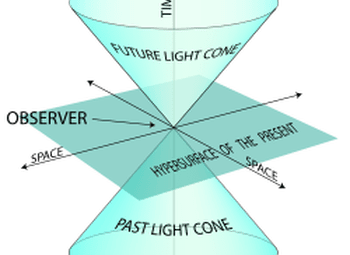
A visualisation of the future light cone, the present, and the past light cone in 2D space.
We know little about ourselves or the world without an understanding of evolution because everything evolves. Here is a list of some good books on the implications of evolutionary theory that I have read and recommend. For more information click on one of the links below. (** Books that had a special influence on my thinking.)
• Philip Appleman ~ Darwin (Norton Critical Editions) **
**
. Philip Appleman ~ The Labyrinth: God, Darwin, and the Meaning of Life[image error]
• Barlow, Connie ~ Evolution Extended: Biological Debates on the Meaning of Life **
**
• Pascal Boyer ~ Religion Explained: The Evolutionary Origins of Religious Thought
• Richard Dawkins ~ The Selfish Gene **
**
• Richard Dawkins ~ The Blind Watchmaker: Why the Evidence of Evolution Reveals …
• Daniel Dennett ~ Darwin’s Dangerous Idea: Evolution and the Meaning of Life **
• Ed Gibney ~ Evolutionary Philosophy[image error]
• Stephen Jay Gould ~ The Panda’s Thumb: More Reflections in Natural History[image error]
• Stephen Jay Gould ~ The Mismeasure of Man (Revised & Expanded)[image error]
• Julian Huxley ~ Evolutionary Humanism (Great Minds Series)
• George Levine ~ Darwin Loves You: Natural Selection and the Re-enchantment of the …
• Jacques Monod ~ Chance and Necessity: An Essay on the Natural Philosophy of Modern …
• Richard Morris ~ The Evolutionists: The Struggle for Darwin’s Soul
• Michael Ruse ~ Darwin and Design: Does Evolution Have a Purpose?
• Michael Ruse ~ Taking Darwin Seriously: A Naturalistic Approach to Philosophy
• Steve Stewart-Williams ~ Darwin, God and the Meaning of Life: How Evolutionary …
• E.O. Wilson ~ On Human Nature: With a new Preface, Revised Edition **
**
• Robert Wright ~ Nonzero: The Logic of Human Destiny **
**
• John Ziman ~ Technological Innovation as an Evolutionary Process
February 4, 2018
Review of Robert Wright’s, Why Buddhism is True

[image error] [image error]
Robert Wright is one of my favorite authors, and I have previously read his books:
1) Nonzero: The Logic of Human Destiny[image error];
2) The Evolution of God;
3) Three Scientists and Their Gods: Looking for Meaning in an Age of Information[image error]; and
4) The Moral Animal: Why We Are, the Way We Are: The New Science of Evolutionary Psychology[image error] (I taught out of this one.)
His most recent work comes with the audacious title: Why Buddhism is True: The Science and Philosophy of Meditation and Enlightenment[image error]. Wright isn’t talking about supernatural Buddhism or its more exotic elements like reincarnation. Instead, he’s interested in the naturalistic parts of Buddhism that can be examined by psychology and philosophy. However, this includes some radical and life-altering claims about nirvana, enlightenment, emptiness, impermanence, overcoming craving, and the doctrine of no-self.
Wright’s basic claim is “that Buddhism’s diagnosis of the human predicament is fundamentally correct, and that its prescription is deeply valid and urgently important.” (15) Now Wright is no tender-minded, new age thinker, and he complements his careful analysis of Buddhist ideas by sharing his experiences meditating. Wright analyzes Buddhist ideas in light of his years of study of Buddhist doctrines, discussions with Buddhist scholars and meditation masters, his own meditative experiences, and especially Darwinian natural selection.
Natural selection is crucial here, as it has wired our brains in ways that cause suffering. Buddhist thinkers detected these tendencies long ago, although they didn’t know about evolution. So Buddhism is a rebellion against much of the evolutionary wiring our brains in order that we can see reality more clearly.
This is all important today because we now possess such destructive power. Combine this power with hatred, which derives from a brain designed by evolution to believe that it is special and its ideas always right, and we are in a dangerous situation. Thus Wright believes we need a revolution in consciousness to overcome this bias toward self and tribe that threatens our survival. A first step would be to realize emptiness, the no-self, and the freedom that results from this understanding. Perhaps we can then see at a deeper level than natural selection designed us to do, and marvel and be thankful for what we find.
Reflection
The only problem I have with the work is that while we would certainly be better off if more people meditated, were less egocentric, minimized craving, and all the rest, I doubt this will happen, at least not on a planetary scale. Wright is aware of this criticism but hopes that whatever small gains we make in becoming self-aware are worth it. On the other hand, I believe that we should use technology to redesign our brains to make them more intellectually and morally virtuous, more capable of experiencing truth, beauty, goodness, and joy. Or perhaps we could scan the brains of meditators and transfer elements of their consciousness to the rest of us. Something like taking a Buddhist chill pill. But we definitely need high-tech fixes and we won’t survive without them.
Let me conclude by saying that Wright is a wonderful writer whose prose engages and inspires. Reading the book invites us to further study Buddhism and begin to meditate. One of the most compelling works I’ve read in a long time.
February 1, 2018
Best New Books on Politics

“A house divided against itself cannot stand.” ~ Abraham Lincoln
These are the new books on contemporary politics that I recommend wholeheartedly. Authored by serious thinkers, these works offer a sobering analysis of our current political woes. For more information click on one of the links below.
(*Books that have been published in the last months.)
*E.J. Dionne, Thomas Mann & Norman Ornstein ~ One Nation After Trump: A Guide for the Perplexed, the Disillusioned, the Desperate, and the Not-Yet Deported
*David Frum ~ Trumpocracy: The Corruption of the American Republic[image error]
*Brian Klass ~ The Despot’s Apprentice: Donald Trump’s Attack on Democracy[image error]
*David C. Johnston ~ It’s Even Worse Than You Think: What the Trump Administration Is Doing To America
*Steven Levitsky and Daniel Ziblatt ~ How Democracies Die[image error]
*Bandy Lee, et. al. ~ The Dangerous Case of Donald Trump: 27 Psychiatrists and Mental Health Experts Assess a President
(2016) Thomas Mann & Norman Ornstein ~ It’s Even Worse Than It Looks: How the American Constitutional System Collided with the New Politics of Extremism
(2016) Jason Stanley ~ How Propaganda Works
January 31, 2018
Academic Geneology
My Academic Geneology
I received my Ph.D. in philosophy in 1992, completing my dissertation under the direction of Richard J. Blackwell, who at the time held the Danforth Chair in Humanities at Saint Louis University. He is currently Professor Emeritus.
Professor Blackwell (1929 -) was educated at MIT, (where he studied history and physics) and St. Louis University, where he received his Ph.D. in philosophy in 1954. After a stint in the philosophy department at John Carroll University in Cleveland, he came back to St. Louis University in 1961. He is an authority in the history of philosophy, the history and philosophy of science, and is probably the world’s foremost experts on the Galileo affair about which he wrote four books:
1) Galileo, Bellarmine, and the Bible
2)[image error] Science, Religion and Authority: Lessons from the Galileo Affair
3) Behind the Scenes at Galileo’s Trial
4) A Defense of Galileo, the Mathematician from Florence[image error]
He was the 2001 recipient of the Aquinas Medal for: “Outstanding teaching; personal publications of permanent and scholarly value; [and] influence upon American philosophical thought without reference to membership in the American Catholic Philosophical Association.” Past recipients include some of the most illustrious names in 20th-century philosophy: Jacques Maritain, Etienne Gilson, Frederick Copleston, Yves Simon, Vernon J. Bourke, James Collins, and Ernan McMullin. In addition to his outstanding record of scholarly achievement, Professor Blackwell directed more than 30 dissertations during his tenure at St. Louis. His Ph.D. students include: Gary Gutting (Notre Dame) and Robert J. Richards (Chicago) among others.
Professor Blackwell’s dissertation, Aristotle’s Theory of Predication, was completed under the direction of Leonard J. Eslick. Professor Eslick, who died in 1991, received his Ph.D. at the University of Virginia in the early 1930s. I met him once at a Christmas party where he told me that Professor Blackwell was the best student he ever had.
I was especially influenced by Professor Blackwell’s belief that philosophical thinking not informed by modern science—particularly physics and evolutionary theory—was superfluous. Through a series of his seminars, I came to realize that physical, mental, social, biological and cosmic life all evolve. This led me to conclude that through the process of development lies the only viable hope for humankind and their post-human descendants. I will forever be indebted to this man of moral and intellectual virtue for his contribution to my education.
I was also influenced by Professor William C. Charron. He is an authority on game theory, modern philosophy, social and political philosophy, and the literature and philosophy of T.S. Eliot. His clarity of mind and love of the craft of writing still influence me today.
JGM
January 29, 2018
Intellectual Heroes
My Intellectual Heroes
It is forty-five years since my higher education began, and in that time there have been hundreds of thinkers who have influenced me—most notably Plato, Aristotle, Buddha, Epictetus, Marcus Aurelius, Hobbes, Descartes, Schopenhauer, Kazantzakis, Orwell, and Piaget. But a few have had a special impact on my thought, and for them, I feel the greatest affinity. All are from the Western philosophical or scientific tradition, the only tradition about which I’m qualified to make good judgments. I list them in the order I encountered their thought.

Bertrand Russell’s Why I am Not A Christian awoken me from my dogmatic slumber when I was still a teenager. I think Russell was the greatest philosopher of the 20th century and— measured by his significant contributions to logic, mathematics, politics, ethics, and popular philosophy—this Nobel Laureate may have been the greatest philosopher in the history of Western tradition. He had the most impressive mind I’ve ever encountered.
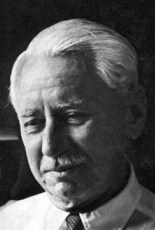
Will Durant – I always love reading this wonderful prose stylist; you sense his presence on every page he writes. What shines forth is his intellect, integrity, and decency. I wish I could have known him, and if I had one biography to write it would be of Will and his beloved wife Ariel. I grow nostalgic thinking of those stacks of books in my undergraduate library where I found him so long ago. I’m glad he was there.

David Hume – I would love to have been with Hume and Franklin in the salons of Paris, sipping brandy, gossiping, and flirting with the ladies! I admire the honest skepticism of this fearless intellect. He was a good and courageous man, who faced death bravely, and he was nobler than most of his detractors, past or present. “Be a philosopher but be still a man,” he advised, and then lived up to his credo.
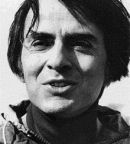
Carl Sagan instilled in me a love of science and clear thinking—the only means that we have to tease truth from reality. He knew that disregarding reason and evidence invites superstition, folly, and atrocities as well. His moral concerns were for his fellow human beings, as well as for the planet and cosmos from which we all sprang. How I miss his articulate and virtuous voice in our selfish, reckless and irrational times.
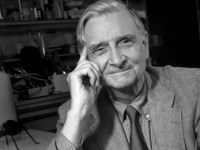
E. O. Wilson taught me many lessons—that human behavior has biological roots; that nothing makes sense except in the light of evolution; that the biosphere is our only home; that most people would rather believe than know; that the evolutionary epic is the grandest narrative that we will ever have; and that we must direct the course of our future evolution. He is a great scientist who is filled with childlike wonder for the natural world.
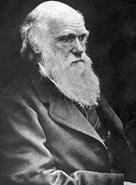
Charles Darwin – Darwin may have been the most influential person in human history. Today multiple sciences converge on his basic insight—which is true beyond any reasonable doubt. He gave us the greatest idea we have, and perhaps will ever have, an idea applicable to everything from the cell to the cosmos. Without a basic understanding of evolution, one lives in intellectual darkness. Before encountering Darwin that’s where I lived, and I thank him for showing me the light.
________________________________________________________________________
(I apologize that my heroes are all white men, and I consider the fact that I wasn’t exposed to more women and people of color a lacuna in my education.)
My Intellectual Heroes
My Intellectual Heroes
It is forty-five years since my higher education began, and in that time there have been hundreds who have influenced me—notably Plato, Aristotle, Buddha, Epictetus, Marcus Aurelius, Hobbes, Descartes, Kazantzakis, Orwell, and Piaget. But in retrospect, a few have had a special impact on my thought, and for them, I feel the greatest affinity. All are from the Western philosophical or scientific tradition, the only tradition about which I’m qualified to make good judgments. I list them in the order I encountered their thought.

Will Durant – I always love reading this wonderful prose stylist; you sense his presence on every page he writes. What shines forth is his intellect, integrity, and decency. I would have liked to have known him, and if I had one biography to write it would be of him and his beloved wife Ariel. I grow nostalgic thinking of those stacks of books in my undergraduate library where I found him so long ago. I’m glad he was there.

Bertrand Russell’s Why I am Not A Christian awoken me from my dogmatic slumber when I was still a teenager. I think Russell was the greatest philosopher of the 20th century and— measured by his significant contributions to logic, mathematics, politics, ethics, and popular philosophy—this Nobel Laureate may have been the greatest philosopher in the history of Western tradition. He had the most impressive mind I’ve ever encountered.

David Hume – I would love to have been with Hume and Franklin in the salons of Paris, sipping brandy, gossiping, and flirting with the ladies! I admire the honest skepticism of this fearless intellect. He was a good and courageous man, who faced death bravely, and he was nobler than most of his detractors, past or present. “Be a philosopher but be still a man,” he advised, and then lived up to his credo.

Carl Sagan instilled in me a love of science and clear thinking—the only means that we have to tease truth from reality. He knew that disregarding reason and evidence invites superstition, folly, and atrocities as well. His moral concerns were for his fellow human beings, as well as for the planet and cosmos from which we all sprang. How I miss his virtuous voice in our selfish, reckless and irrational times.

E. O. Wilson taught me many lessons—that human behavior has biological roots; that nothing makes sense except in the light of evolution; that the biosphere is our only home; that most people would rather believe than know; that the evolutionary epic is the grandest narrative that we will ever have; and that we must direct the course of our future evolution. He is a great scientist who is filled with childlike wonder for the natural world.

Charles Darwin – Darwin may have been the most influential person in human history. Today multiple sciences converge on his basic insight—which is true beyond any reasonable doubt. He gave us the greatest idea we have, and perhaps will ever have, an idea applicable to everything from the cell to the cosmos. Without a basic understanding of evolution, one lives in intellectual darkness. Before encountering Darwin that’s where I lived, and I thank him for showing me the light.
January 26, 2018
Good Books on Astronomy and Physics
This is a list of some good books on astronomy and physics that I have read and recommend. For more information click on one of the links below.
• David Deutsch ~ The Fabric of Reality: The Science of Parallel Universes … 
• Freeman Dyson ~ Infinite in All Directions
• Richard Feynman ~ The Pleasure of Finding Things Out: The Best Short Works of …
• Brian Greene ~ The Elegant Universe: Superstrings, Hidden Dimensions, and the Quest …
• John Gribben ~ Hyperspace: The Universe and Its Mysteries
• Stephen Hawking ~ The Universe in a Nutshell
• Stephen Hawking ~ A Brief History of Time
• Michio Kaku ~ Hyperspace: A Scientific Odyssey through Parallel Universes, Time …
• Lawrence Krauss – The Greatest Story Ever Told – So Far: Why Are We Here?[image error]
• Lawrence Krauss – A Universe from Nothing: Why There Is Something Rather than …
• Lawrence Krauss ~ The Physics of Star Trek
• Alan Lightman ~ The Accidental Universe: The World You Thought You Knew
• Ilya Prigogine ~ The End of Certainty
• Carl Sagan ~ Pale Blue Dot: A Vision of the Human Future in Space
• Michael Talbot ~ The Holographic Universe: The Revolutionary Theory of Reality
• Steven Weinberg ~ The First Three Minutes: A Modern View Of The Origin Of The Universe
January 24, 2018
Good Books on Artificial Intelligence and Robotics
This is a list of some good books on artificial intelligence and robotics that I have read and recommend. For more information click on one of the links below.
Artificial Intelligence/Robotics
• Stuart Armstrong ~ Smarter Than Us: The Rise of Machine Intelligence
• James Barrat ~ Our Final Invention: Artificial Intelligence and the End of the …
• Blackford & Broderick ~ Intelligence Unbound: The Future of Uploaded …
• Marshall Brain ~ The Second Intelligent Species: How Humans Will Become as …
• Nick Bostrom ~ Superintelligence: Paths, Dangers, Strategies
• Rodney Brooks ~ Flesh and Machines: How Robots Will Change Us
• Ted Chu ~ Human Purpose and Transhuman Potential: A Cosmic Vision of Our …
• Katherine Hayles ~ How We Became Posthuman: Virtual Bodies in Cybernetics …
• Ray Kurzweil ~ The Age of Spiritual Machines: When Computers Exceed Human …
• Menzel & D’Aluisio ~ Robo Sapiens: Evolution of a New Species
• Marvin Minsky ~ The Society of Mind
• Hans Morovec ~ Robot: Mere Machine to Transcendent Mind
• Paul & Cox ~ Beyond Humanity: CyberEvolution and Future Minds
• Martine Rothblatt ~ Virtually Human: The Promise—and the Peril of Digital …
• Charles Rubin ~ Eclipse of Man: Human Extinction and the Meaning of Progress,
• Ilia Stambler ~ A History of Life-Extensionism in the Twentieth Century
• Keith Wiley ~ A Taxonomy and Metaphysics of Mind-Uploading
• Sam Williams ~ Arguing A.I.: The Battle for Twenty-first-Century Science
• George Zarkadakis ~ In Our Own Image: Savior or Destroyer? The History and Future of …
January 23, 2018
What Computers Will Never Do
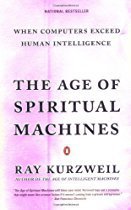
The Age of Spiritual Machines: When Computers Exceed Human Intelligence [image error]
Here is a reply from a computer scientist to my recent post about Ray Kurzweil‘s book. My brief reply is at the bottom.
There is a limit to computer intelligence arising from its database. Human beings require at least 18 years of experiences in order to learn the minimal requirements of an adult Homo sapiens. Moreover, they continue to learn throughout their lives, so that by the time they are our age, they’re just as brilliant as you and I are.
It is impossible to code a life experience into a computer database. To develop that life experience, a computer would have to live a human life. Moreover, it would have to do so with the emotional structures of a human being …
A computer in the future could probably store a life’s worth of such data, but how could it interpret it? The human brain regularly cleans out the meaningless crap of our daily lives … That’s what sleep is for — not resting our muscles but cleaning the garbage out of our minds. But how is a computer to know what to keep and what to throw away?
I think that Mr. Kurzweil is overly optimistic regarding the potential of computer technology. His direct comparison of computers to brains is erroneous. An automobile chassis with an engine is not the same thing as a pair of legs. A camera is not at all the same thing as the human eye. And a computer is not at all the same thing as a brain … [but] you’d never use a computer to decide whether to fall in love.
Technology will NEVER replace our biological faculties for certain tasks because those tasks will often be too closely tied to our entire biological processes to be taken over by technology. The most extreme example of this is provided by sexual interaction. I think we can all agree that the thought of making love to a robot is simply absurd …
Sure, there’s plenty of room for further advances … Yet few of these things will be anywhere near as revolutionary as the desktop computer and the smartphone were in their early years. Fewer people will rush out to buy the latest techie toy …
Nevertheless, I shall never have a deep conversation with any computer. Your philosophical musings on this blog will never be replaced by a computer’s thoughts. Computers will become smarter, but they’ll never be wise.
Brief Reflections
There is a lot to say about all this but here are a few thoughts. I’m not comfortable with saying machines will never be able to do this or that. A well-designed robot may not be a perfect human replica, but if it does what humans do it is similar enough for me to consider it conscious and worthy of moral and legal protection. In fact, good robots will probably be superior to us—think Mr. Data from Star Trek.
Kurzweil has an entire section on robot sex but let’s just say that it is easy enough to imagine having better sex if we are our partners were sexually upgraded. As for deep conversation, I’d prefer to converse with an AI rather than with most human beings. And I believe that minds can run on substrates besides carbon-based brains.
The University of Oxford philosopher Nick Bostrom defines superintelligence as “an intellect that is much smarter than the best human brains in practically every field, including scientific creativity, general wisdom and social skills”.[1] I don’t know whether we create such intelligence, or whether they will emerge on their own, but I think the survival of life on earth depends on intellectual enhancement. And, with oceans of time for future innovation almost anything is possible–including the emergence of superintelligence.
One thing I do know. If we have intelligent descendants, if they survive, and if science and technology continue to advance, the future will be unimaginably different from the past.
Computer Scientist’s Response
“I’m not comfortable with saying machines will never be able to do this or that.”
Well, yes, I’m just begging to be made a fool of with my comment. Perhaps I should constrain my statement a bit. How’s this version:
“Until computers can simulate the biochemical ties between brain and body, they’ll never be able to simulate humans.”
My thinking on this was powerfully influenced by Descartes’ Error: Emotion, Reason, and the Human Brain[image error] by Antonio R. Damasio. It presents the neurophysiological argument that the brain is inseparable from the body. There’s no such thing as “the mind-body problem” because they are a single system. Hence, replicating human cognition with silicon is rather like trying to build an airplane as if it were a bird, with flapping wings.
An airplane can go much faster and further than any bird, and it can carry a much heavier load, but it can’t land on a moving branch, take off in a fraction of a second, or show any of the maneuverability of a bird. In the same fashion, a computer can do a lot of things that people can’t do, but pursuing replication of human cognition is, In My Vainglorious Opinion, a fool’s errand.
January 20, 2018
Summary of Ray Kurzweil’s: “The Age of Spiritual Machines: When Computers Exceed Human Intelligence”

The Age of Spiritual Machines: When Computers Exceed Human Intelligence [image error]
(I first read this book almost 20 years ago and it profoundly affected my thinking. Here is my summary of the book that I used in my classes in the CS department at UT-Austin.)
“The Inexorable Emergence”
Sometime in the next 100 years, machines will surpass human intelligence. Computers today already surpass humans in activities like playing chess, diagnosing some medical conditions, buying and selling stocks, and guiding missiles. Still, human intelligence is far more flexible than machine intelligence. Computers can’t describe objects on a table, write a term paper, tie shoes, distinguish a dog and a cat, appreciate humor, etc. One reason for this is that computers are simpler than the human brain, about a million times simpler. But this difference will go away. Computers are doubling in speed every twelve months, and they will achieve the memory capacity and computing speed of the human brain around 2020.
Still, this won’t allow computers to match the flexibility of human intelligence. And that’s because the software of intelligence is as important as the hardware. One way to mirror the brain’s software is by reverse engineering–scanning a human brain (which will be achievable in this century) and copying its neural circuitry into a neural computer of sufficient capacity. We might be able to train a system of parallel neural nets to understand language and model knowledge, to read and understand written materials. Although the ability of today’s computers to do this is quite limited, their abilities are improving. Computers will be able to read, understanding what they read, in this century. Computers can then read all the world’s literature and gather knowledge on their own.
After computers reach a human level of intelligence, they will go beyond it. They already remember and process information better than we do. Computers remember trillions of facts perfectly, while we have a tough time with a few phone numbers. A computer can search a huge database in fractions of a second, and share their knowledge bases. The combination of human-level intelligence and the speed, accuracy, and memory capabilities will move computers past human intelligence. While our neurons are marvelous, they are hardly optimal. Most of their complexity supports of life processes, not computation and information analysis. And neurons are slow compared to electronic circuits which are a million times faster. Once computers reach a human level of ability in understanding abstract concepts, recognizing patterns, and more, they will apply their abilities “to a knowledge base of all human-acquired knowledge.”
Most of us think of evolution as a billion-year drama that leads to human intelligence. But the creation of greater than human intelligence will dispel the notion that we are the most intelligent creatures. And this realization will have profound effects on our thinking, lives, and selves. A variety of philosophical questions will be asked. Are computers thinking, or just calculating? Are humans thinking or just calculating? Are there any important differences between human thinking and machine thinking? Will we ever consider our machines conscious? For example, if someone scans their brain through a “noninvasive scanning technology” … and downloads their brain to their personal computer,” are the people who come out of the machine the same ones that entered?
Summary of Chap 1 – Kurzweil’s The Age of Spiritual Machines
In the first few moments of the universe, important events and paradigm shifts happened very fast. As the universe aged, cosmologically significant events took eons of time. So time, thought of as the interval between significant events, has been moving very slowly for most of cosmic evolution—but it has slowly been moving faster and is about to begin to move exponentially faster. [What K calls “the knee of the curve,” the spot at which exponential growth is about to take off, basically describes the same phenomena that futurists call “the singularity” or “the spike.”] We can see this in the pace of cosmic evolution: 10 billions years until the earth’s formation; a few billion more for life to evolve, hundreds of millions of years till the emergence of primates, millions of years till the emergence of humanoids, the emergence of Homo sapiens a mere ½ million years ago, etc. In short, time is speeding up by which K means that the intervals between salient (important) events are shrinking, i.e., there is an exponential curve which plots the nature of change.
Technology—fashioning and using tools ever more sophisticated tools—is “evolution by other means.” Just as DNA records the information of biology, technology records its own records in books, libraries, and computer databases.
[If you are interested in this idea, explore the concept of memes. Memes, like genes, preserve and transfer information only much faster because, while genes go from one body to another, memes spread from one brain to another. And you can spread a meme—an idea or belief for example—very quickly. I just spread the “meme” meme to all the people who read this. And the meme could be a meme for any idea: immortality, evolution, a god, patriotism, etc. Many contemporary thinkers believe that memes infect brains which then spread them; some think of people as memebots. For more see the work of Richard Dawkins, who introduced the term in his book, The Selfish Gene. In addition, there is an entire literature on memes.]
And technology has expedited the process of evolution considerably. Consider that Homo sapiens sapiens (as opposed to Neanderthals) appeared only 90,000 years ago (a mere moment in cosmic time) and become the lone hominoids a mere 40,000 years ago. Still, it took tens of thousands of years to figure out how to sharpen both ends of stones to make them effective! (Let’s hope things are evolving faster than this now.) And the pace of technological change has accelerated remarkably since then. For example, the 19th century saw technology increase at a dramatic rate compared to the 18th century and increased unbelievably fast compared to the 12th century! In the 20th century, major shifts in technology began to happen in decades or in some cases in a few years. A hundred years ago there was no flight or radio. When I was born there were no wireless phones and not many color TVs. When you were born there were no cell phones or WWW.
[K’s discussion of technology in the grey box on pages 16-17 is interesting. Tech is the use of tools and especially recording the knowledge that fashions better tools—from oral to written to computer databases—to control the environment. And technology is a means of transcending—of putting pieces of matter together to create sound and then…music, which itself expresses feelings, emotions, etc. In short, we use tech to, in addition to other purposes, communicate. And language plays the key role in human communication. (What a marvelous thing language is. Where would we be without it?) Other species communicate but we record our communication.]
Technology has enabled our species to dominate the earth, exercise some control over our environment, and survive. A noteworthy technological innovation has been computation “the ability to remember and solve problems…” The machines created by our technology do more than merely increase our strength, increasingly they solve a vast array of problems. Computers are at the cutting edge of this and governed by Moore’s law: every 2 years or so the surface area of a transistor is reduced by 50% and thus you can put twice as many transistors on an integrated circuit. The implication is that every 2 years you get twice the computing power for the same amount of money. This trend should continue for another 15 years or so after which it will break down since by that time transistor insulators will be but a few atoms wide. K makes the point—and backs it up with statistics, pictures, and graphs—that this trend of doubling of computing power goes back to the beginning of the 20th century. To really understand what will happen in the 21st century and beyond we need to more closely look at the exponential growth of technology that will bring about vast changes in the near future.
Crucial to K’s argument is what he calls “the law of time and chaos.” (See illustrations on pgs. 26-7) He asks you to consider why some processes start out fast and then slow down—salient events in cosmic evolution or in the biological development of an organism—and why others start slow and then speed up—the evolution of life forms or technology. The answer is that the law of t & c shows a relationship between the speed of time and chaos. If there is a lot of chaos or disorder in a system, the time between salient events is great and thus time can be said to slow down. As the chaos decreases, in other words as order increases, the time between salient events gets smaller and time can be said to speed up. The “law of increasing chaos” denotes the former while the “law of accelerating returns” denotes the latter. The law of AR is what most interests K. While the universe increases in disorder or entropy, evolution leads to increasing order (information for the purpose of survival) and usually complexity. Technology is evolution by other means than biology. [It is part of cultural evolution which, unlike biological evolution, is now moving extraordinarily fast. Cultural evolution is now the whole ballgame.] And technological evolution speeds up because “it builds on its own increasing order.” In other words, technological evolution, like other forms of evolution, “builds on itself.” What this all leads to is the following:
a) evolution builds on itself, thus
b) in an evolutionary process order increases exponentially, thus
c) time speeds up exponentially, thus
d) the returns accelerate.
This law of accelerating returns is what drives cultural, and notable technological, evolution forward. And the rate of these returns, which then build on themselves to create higher returns, is growing exponentially. Thus technology is most significant as it provided the means to store the information from previous brains. And all of this means that, like the moral of the story of the inventor of chess and the Emperor of China, change is increasing exponentially. And this means that the near future will be radically different from the present.
Summary Chap 6 “Building New Brains”
The Hardware of Intelligence – To build intelligent machines we need: 1)formulas (recursive search, self-organizing networks, and evolutionary improvement); 2) knowledge (for a process to achieve results); and 3) computation. Here the human brain is strong because of its parallel processing but weak in terms of its slow computational speed. “For this reason, DNA-based evolution will eventually have to be abandoned. DNA-based evolution is good at tinkering with and extending its designs, but it is unable to scrap an entire design and start over. Organisms created through DNA-based evolution are stuck with an extremely plodding type of circuitry.”101
“But the Law of Accelerating Returns tells us that evolution will not remain stuck at a dead-end for very long. And indeed, evolution has found a way around the computational limitations of neural circuitry. Cleverly, it has created organisms that in turn invented a computational technology a million times faster than carbon-based neurons (which are continuing to get faster). Ultimately, the computing conducted on extremely slow mammalian neural circuits will be ported to a far more versatile and speedier electronic (and photonic) equivalent.” 101-02
Achieving the Hardware Capacity of the Human Brain – To summarize: K’s argues (with good evidence and inferences from that evidence) that computers will equal the computing speed of a human brain by about 2020. (the brain only calculates at a rate of 200 per second, but there are about 100 trillion neural connections—massive parallel processing.) The memory capacity of the human brain should also be equaled at about that time. “Taking all of this into consideration, it is reasonable to estimate that a $1,000 personal computer will match the computing speed and capacity of the human brain by around the year 2020…” 105 A single personal computer will have the CS & MC of a small village by 2030, the population of the US by 2048, and a trillion human brains by 2060. “If we estimate the human Earth population at 10 billion persons, one penny’s worth of computing circa 2099 will have a billion times greater computing capacity than all humans on Earth.” 105
Computing Substrates of the 21st Century – K knows that Moore’s law cannot hold forever: “For the immediate future, Moore’s Law will continue with ever smaller component geometries packing greater numbers of yet faster transistors on each chip. But as circuit dimensions reach near atomic sizes, undesirable quantum effects such as unwanted electron tunneling will produce unreliable results.” 106 He offers a number of scenarios to deal with this issue: 1) 3-dimensional computing – “Already, venture-backed companies … are competing to build chips with dozens and ultimately thousands of layers of circuitry.”106 2) computing with light – “Optical computing uses streams of photons (particles of light) rather than electrons. A laser can produce billions of coherent streams of photons, with each stream performing its own independent series of calculations.” 106 3) computing with the machinery of life – “A new field called molecular computing has sprung up to harness the DNA molecule itself as a practical computing device. DNA is nature’s own nanoengineered computer and it is well suited for solving combinatorial problems. … Applying actual DNA to practical computing applications got its start when Leonard Adleman, a University of Southern California mathematician, coaxed a test tube full of DNA molecules …to solve the well-known “traveling salesperson” problem. …. It is an ideal problem for a recursive algorithm, although if the number of cities is too large, even a very fast recursive search will take far too long. Professor Adleman and other scientists in the molecular-computing field have identified a set of enzyme reactions that correspond to the logical and arithmetic operations needed to solve a variety of computing problems. Although DNA molecular operations produce occasional errors, the number of DNA strands being used is so large that any molecular errors become statistically insignificant. Thus, despite the inherent error rate in DNA’s computing and copying processes, a DNA computer can be highly reliable if properly designed.” 107
There are other possibilities including a) the brain in the crystal, b) the nanotube, and c) quantum computing. Of all the technological possibilities to replace digital computing, this is the one with the most promise and the one K discusses most. Unlike digital computing which relies on bits of info which are either on or off, “Quantum computing, … is based on qu-bits … which essentially are zero and one at the same time. The qu-bit is based on the fundamental ambiguity inherent in quantum mechanics. The position, momentum, or other states of a fundamental particle remains “ambiguous” until a process of disambiguation causes that particle to “decide” where it is, where it has been, and what properties it has …In a quantum computer, the qu-bits would be represented by a property–nuclear spin is a popular choice–of individual electrons. If set up in the proper way, the electrons will not have decided the direction of their nuclear spin (up or down) and thus will be in both states at the same time. The process of conscious observation of the electrons’ spin states–or any subsequent phenomena dependent on a determination of these states–causes the ambiguity to be resolved. …The key to the quantum computer is that we would present it with a problem, along with a way to test the answer. We would set up the quantum decoherence of the qu-bits in such a way that only an answer that passes the test survives the decoherence. The failing answers essentially cancel each other out.” 110-11
The next few pages argue that QC is feasible, it difficulties can be overcome, and it will provide encryption that cannot be broken. Most importantly, he argues against those who say conscious machines are impossible. This all brings us to the main point of the chapter: how we can and will reverse engineer the human brain. K suggests that we might begin the process of understanding how to reverse engineer a human brain by “freezing a recently deceased one.” 121 We could examine one layer at a time to scan every neural connection. We would proceed a layer at a time until we have a 3 dimensional model of the brain. Even better we could examine living brains of persons who are about to die and consent to the procedure. And with “emerging noninvasive means of scanning our brains,” 122 we will eventually be able to scan living brains completely, the way we scan our bodies with MRIs.
Ultimately, we would want to map the entire brain, including mapping it synapse by synapse, a capability that will result from the continual increase in scanning ability. After scanning the brain we should be in a position to understand it, at least its overall pattern, thus slowing unpeeling the onion. And the next step is downloading our minds into computers. After understanding the important algorithms of each brain region we should, in theory, be able to accomplish this. We don’t need complete understanding but we do need the ability to copy a brain’s pattern. The tech will be bad at first but should improve gradually.
And what will we find when we do this? To objective observers, the new “person” will appear to be identical to the person originally scanned. From the subjective point of view, this issue is more difficult and arguments can be made on both sides. If we are basically the pattern of our consciousness, then it seems the new person is the same as the original. If our essence is our body, then the person doesn’t survive. This is complicated if both the original and copy are around, for then the original will think he is the real person and may not want the clone to carry on for him. But then again for the new person across the divide, she will think she is the original person and won’t believe she committed suicide by surviving in this way. And even if she wonders if she is the same person she’ll still be glad she exists since without taking the plunge she wouldn’t. K believes that in the second ½ of the 21st century the process of taking the leap will begin.
“Initially there will be partial porting—replacing aging memory circuits, extending pattern-recognition and reasoning circuits through neural implants. Ultimately, and well before the 21st century is complete, people will port their entire mind files to the new thinking technology.” 126 While nostalgic for our carbon-based bodies, we will quickly get over it as we find that porting ourselves allows us to extend our minds. “Remember that $1000 of computing in 2060 will have the computational capacity of a trillion human brains. So we might as well multiply memory a trillion fold, greatly extend recognition and reasoning abilities, and plug ourselves into the pervasive wireless-communications network. And while we are at it, we can add all human knowledge—as a readily accessible internal database as well as already processed and learned knowledge using the human type of distributed understanding.” 126-28
And this means that if you use this technology your software is no longer dependent on your hardware. And your evolving mind file won’t be stuck with the circuitry of the brain but can evolve well beyond that. Your mind file can be transferred from one medium to another just as files are transferred from one computer to another. And “our immortality will be a matter of being sufficiently careful to make frequent backups. If we’re careless about this, we’ll have to load an old backup copy and be doomed to repeat our recent past.” 129
Chap 7 – … And Bodies
Chapter 6 was about building new brains. Chapter 7 is about building new bodies. Will we want to download our personal evolving mind files into our original bodies, upgraded bodies, nanoengineered bodies, or virtual bodies? K starts by claiming that body and brain will like evolve and be enhanced together—gradually. We are already further along with body transformation than with brain transformation with titanium devices, artificial skin, heart valves, pacemakers, etc. So we might want to re-build our bodies completely. Of course, most of us are attached to the warmth and softness of our bodies. We might start by enhancing our bodies cell by cell using genetic therapies of some kind. But we can only go so far with this, and that’s because of the limitations of DNA-based cells that depend on protein synthesis. (stable under narrow temperature and pressure ranges, sensitive to radiation, etc.) So K agrees with Moravec that such bodies—however well they were enhanced—would just be second-rate robots.
Instead lets us nanotechnology to rebuild the world, atom by atom. While our machines of today are marvelous and precise compared to stone blades, they are primitive when viewed from the atomic level; our mechanisms “moved atoms in great thundering statistical herds. … Nanotechnology is technology is technology built at the atomic level: building machines one atom at a time. … We have … proof of the feasibility of nanotechnology: life on Earth. Little machines in our cells called ribosomes build organisms such as humans one molecule at a time … Life on Earth has mastered the ultimate goal of nanotechnology, which is self-replication.” 137 But life on earth is limited by the molecular building blocks it uses. And just as human-created computation will exceed natural computation, 21st-century physical technology will exceed the capabilities of amino acid-based nanotechnology of nature.
The holy grail of NT is that nanomachines would be intelligent, able to manipulate things at the nano level and be able to replicate. Important theorist like Eric Drexler and Ralph Merkle have shown the feasibility of self-replicating nanobots. (And there is currently a ton of money being invested in NT.) The possibilities for NT to transform the world are endless: they could build inexpensive solar cells to replace fossil fuels; be launched in our bloodstream to improve the immune system, destroy pathogens, cancer cells, rebuild diseased organs (the inspiration for the cryonics movement. Ralph Merkle, formerly of XeroxPark, inventor of encryption technology, and on the board of directors at Alcor Life Extension told me in personal correspondence that if NT works, cryonics almost certainly will. The point is that these are not fringe persons who are talking about this stuff, but respectable engineers, computer scientists, and others.) And more possibilities: reconstruction of bodily organs and systems, reverse engineering of human neurons and any cell in the human body. Moreover: “Food, clothing, diamond rings, buildings could all assemble themselves molecule by molecule. Any sort of product could be instantly created when and where we need it. Indeed the world could continually reassemble itself to meet our changing needs, desires, and fantasies. … NT will permit objects such as furniture, buildings, clothing, even people to change their appearance and other characteristics—essentially to change into something else—in a split second.” 140
Will we want to do this? “There is a clear incentive to go down this path. Given a choice, people will prefer to keep their bones from crumbling, their skin supple, their life systems strong and vital. Improving our lives through neural implants on the mental level, and NT enhance bodies on the physical level, will be popular and compelling. It is another one of those slippery slopes—there is no obvious place to stop this progression until the human race has largely replaced the brains and bodies that evolution first provided.” 141 K admits there are dangers from NT, especially self-replication run amok and the intentional hostile use of the tech. He tries to defend the development of NT nonetheless.
Of course, we don’t need real bodies; in a VR a virtual body would do fine. Next, K traces the development of VR from the primitive computer games of the 60s to the state of the art VR today. But in the next decade, faster computers will continue to make VR more realistic and he goes into detail about how this will be done. And later in the 21st century, we won’t need to enter a booth to experience VR. “Your neural implants will provide the simulated sensory inputs of the virtual environment—and your virtual body—directly in your brain.” 144
And that’s not all. By the late 21st century “the real world will take on many of the characteristics of the VW through the means of NT “swarms.” 145 Intelligent nanobots can merge and create something called Utility Fog. Spaces filled with UF go unnoticed but are able to “simulate any environment by creating all sorts of structures.” A Fog environment can be anything you want. UF creates a VR in the real physical world. Other minds can be simulated in the UF as “Fog people.” Furthermore, “there are a variety of proposals for NT swarms, in which the real environment is constructed from the interacting multitudes of nanomachines.” 145 What this all leads to is a situation in the last 21st century when “we will have to select our body, our personality, [and] our environment …” 146
The next section deals with virtual sex, sexbots (sexual robots), neural implant sex, and the great sex inside UF. K then delves into spiritual experiences which we already know has a physiological basis. When we completely understand their neurological correlates we can have them at will, if that is what we want. (Instead of sex I suppose.) A K company has already created a device which creates brain generated music which elicits the relaxation response. And he reports on the well-known work of neuroscientists from UCSD who have found “what they call the God module, a tiny locus of nerve cells in the frontal lobes that appear to be activated during religious experiences.” 152 This “neurological basis for spiritual experience has long been postulated by evolutionary biologists because of the social utility of religious belief.” 153 At any rate, a full understanding of this research would allow us to augment it. “Twenty-first-century machines … will do as their human progenitors have done …[and] connect with their spiritual dimension.” 153
“Epilogue: The Rest of the Universe Revisited”
K has argued that “the emergence of machine intelligence that exceeds human intelligence … is inevitable.” 253 This results from the Law of Accelerating Returns which also applies to the rest of the universe. But in what way?
To begin to answer this question K speculates that life is both “rare and plentiful” in the universe. That is, very rare compared to the immensity of the universe but very plentiful in an absolute sense since the universe is immense. Since life probably exists on other planets, K gives us a sense of the kinds of thresholds they would go thru. [I don’t think he needs this extraterrestrial life argument. He could just say these are the stages that life went thru on earth.] He thinks the evolution of life forms could be thought of as one threshold, the evolution of intelligence as the next, then the evolution of technology, followed by the evolution of computation, followed by the merger of a species with the tech it has created. “At this stage … the computers are themselves based at least in part on the designs of the brains … of the species that originally created them and in turn, the computers become embedded in and integrated into the species’ bodies and brains.” 255-56
But there are many possible ways that this prediction might fail: nuclear war, self-replicating nanobots, and software viruses. K guesses that we have “a better than even chance of making it through.” But he adds: “I have always been accused of being an optimist. [In truth I don’t know how to figure the odds of us making it thru at all, much less thru to the age of spiritual machines.]
K next turns to considering what visitors from faraway places would be like. Such visitors wouldn’t be much like they are portrayed in science fiction, [or by Bubba’s report] but would probably be microscopic and interested only in information. [I have always found this section a bit puzzling. My best guess is that K includes it so as to answer those who would ask why we haven’t been visited by all these civilizations that have survived.]
K concludes his book with a dramatic section concerning the relevance of intelligence for the universe. While the common view is that intelligence is impotent when compared to the mighty forces of the universe, K disagrees. Intelligence does affect physical forces; our intelligence thwarts gravity and manipulates physical forces in other ways. And yet, the density of intelligence is very small. [If you don’t believe this travel out West and look at a mountain—one large, dumb, although maybe beautiful rock.] If you imagine that intelligence will increase exponentially with time, then it will eventually become a worthy competitor for the big universal forces.
Thus he concludes: “The laws of physics are not repealed by intelligence, but they effectively evaporate in its presence.” What then of the fate of the universe? K concludes: “the fate of the Universe is a decision yet to be made, one which we will intelligently consider when the time is right.”



